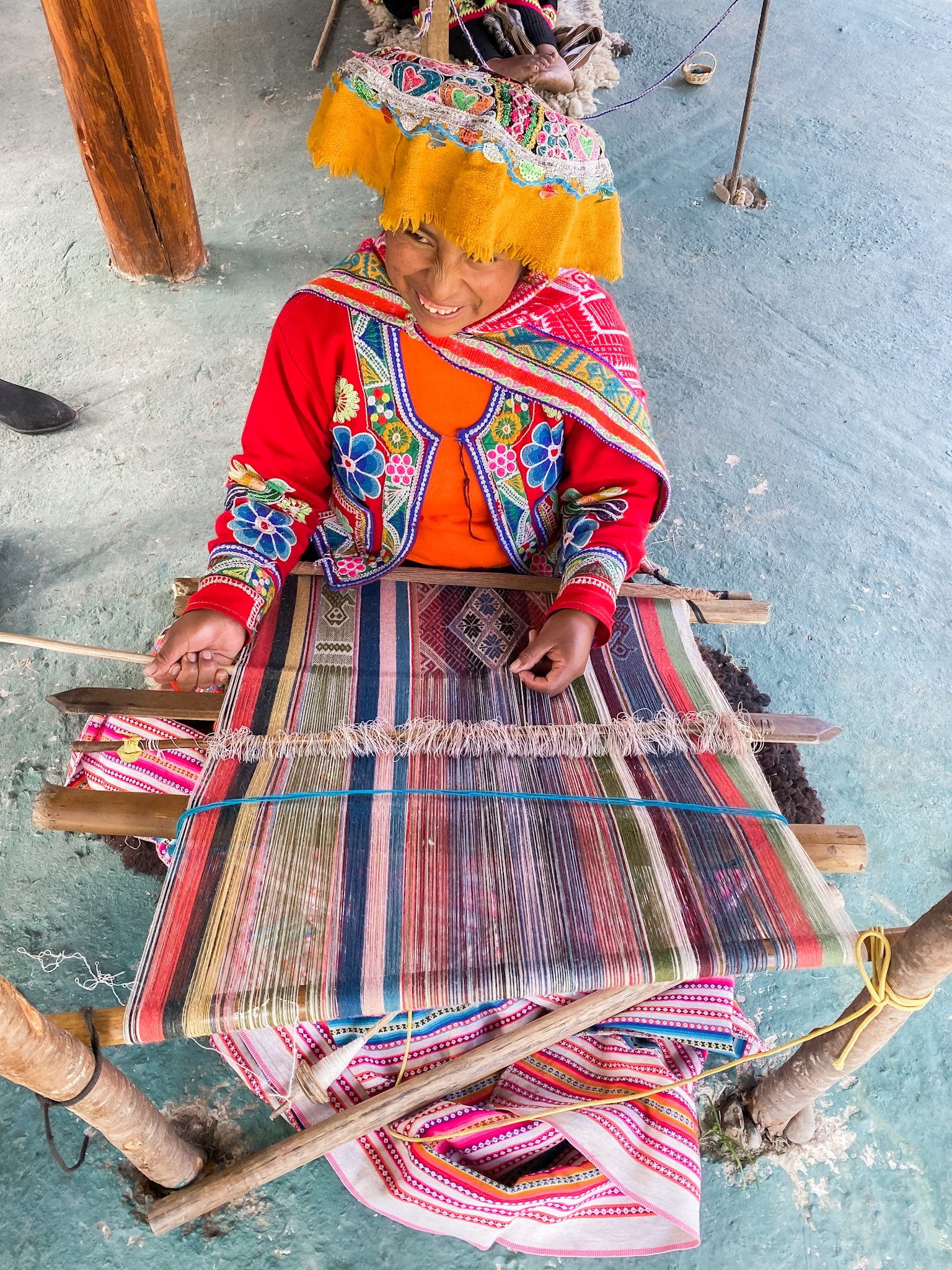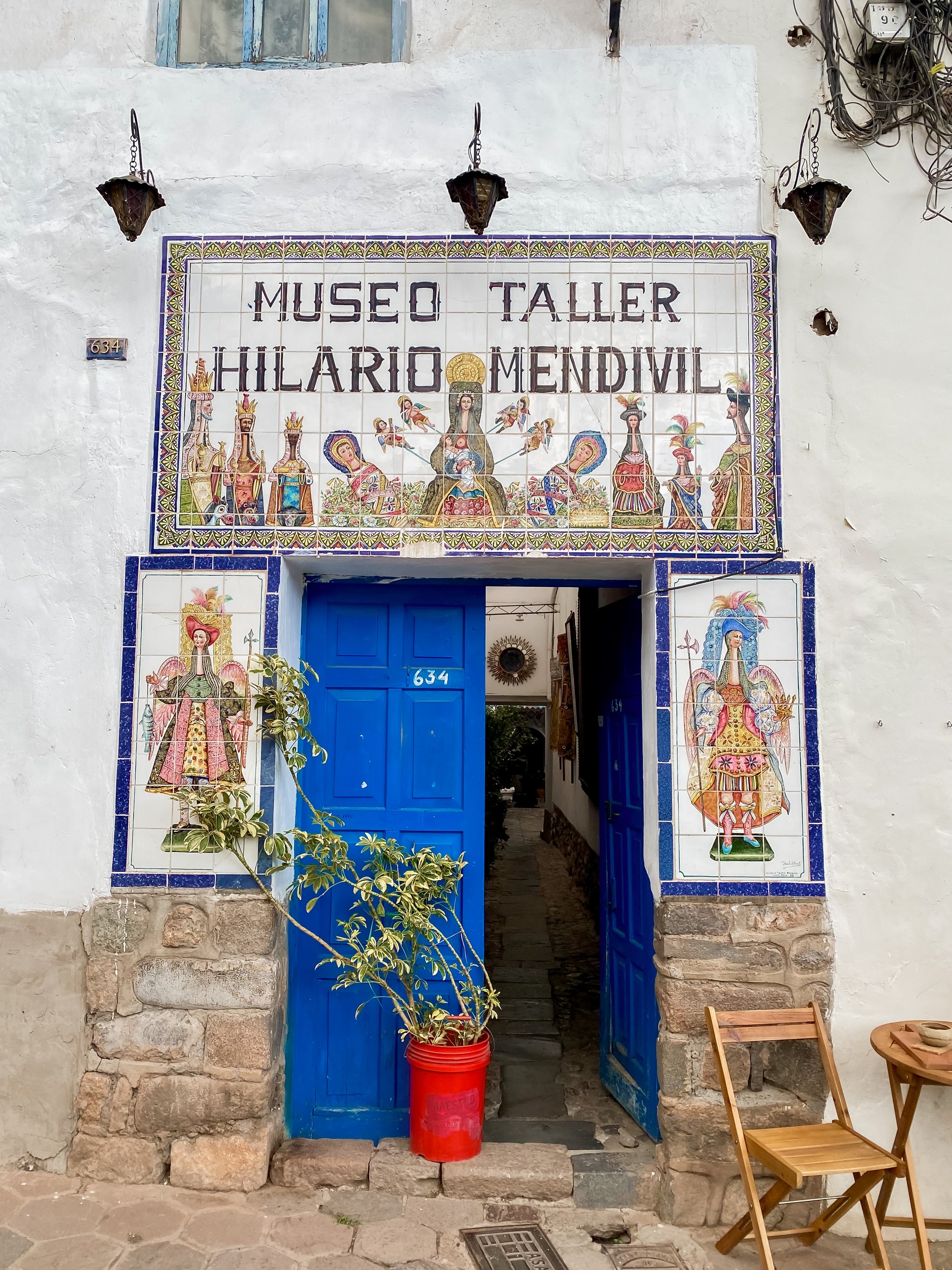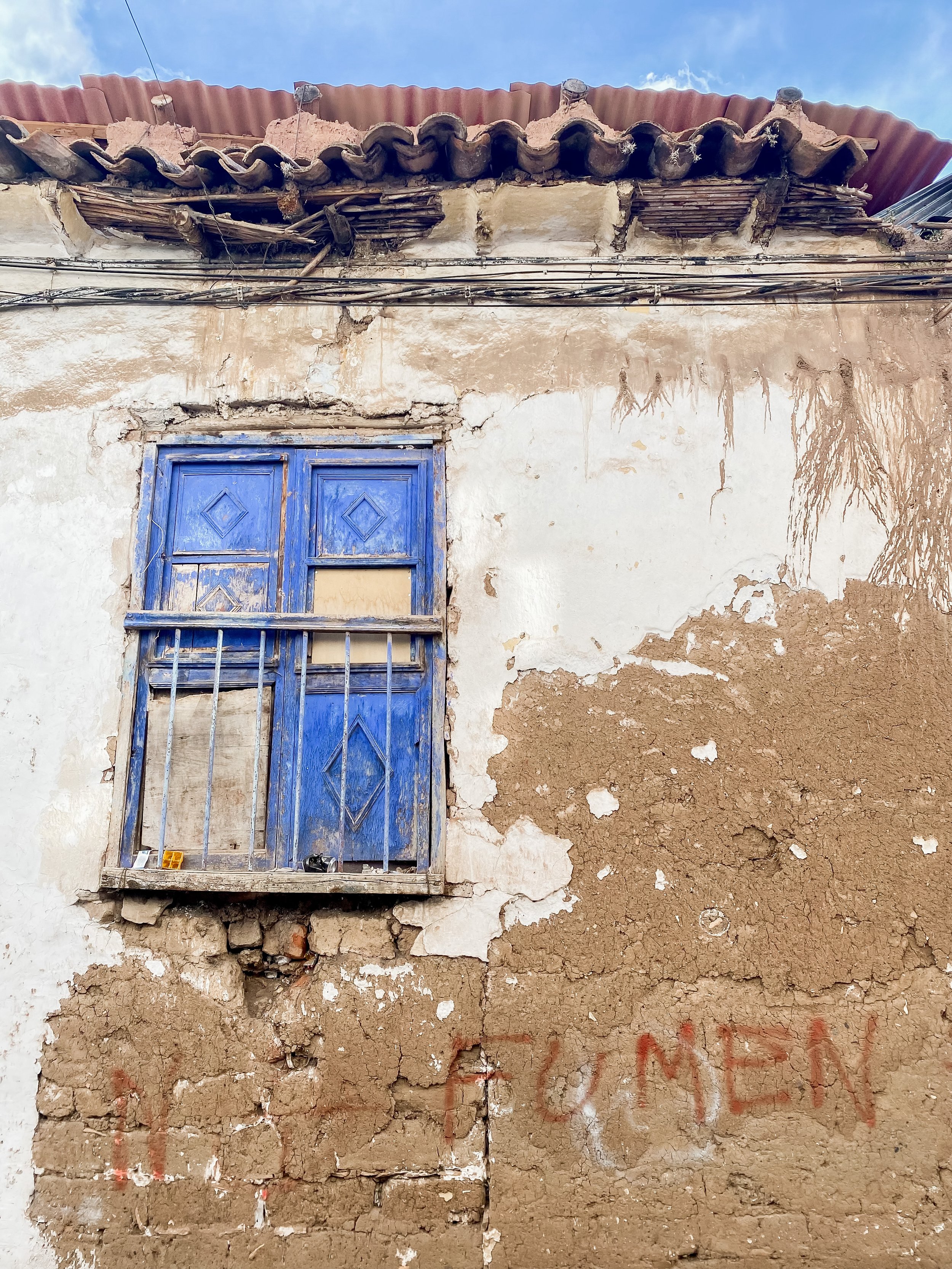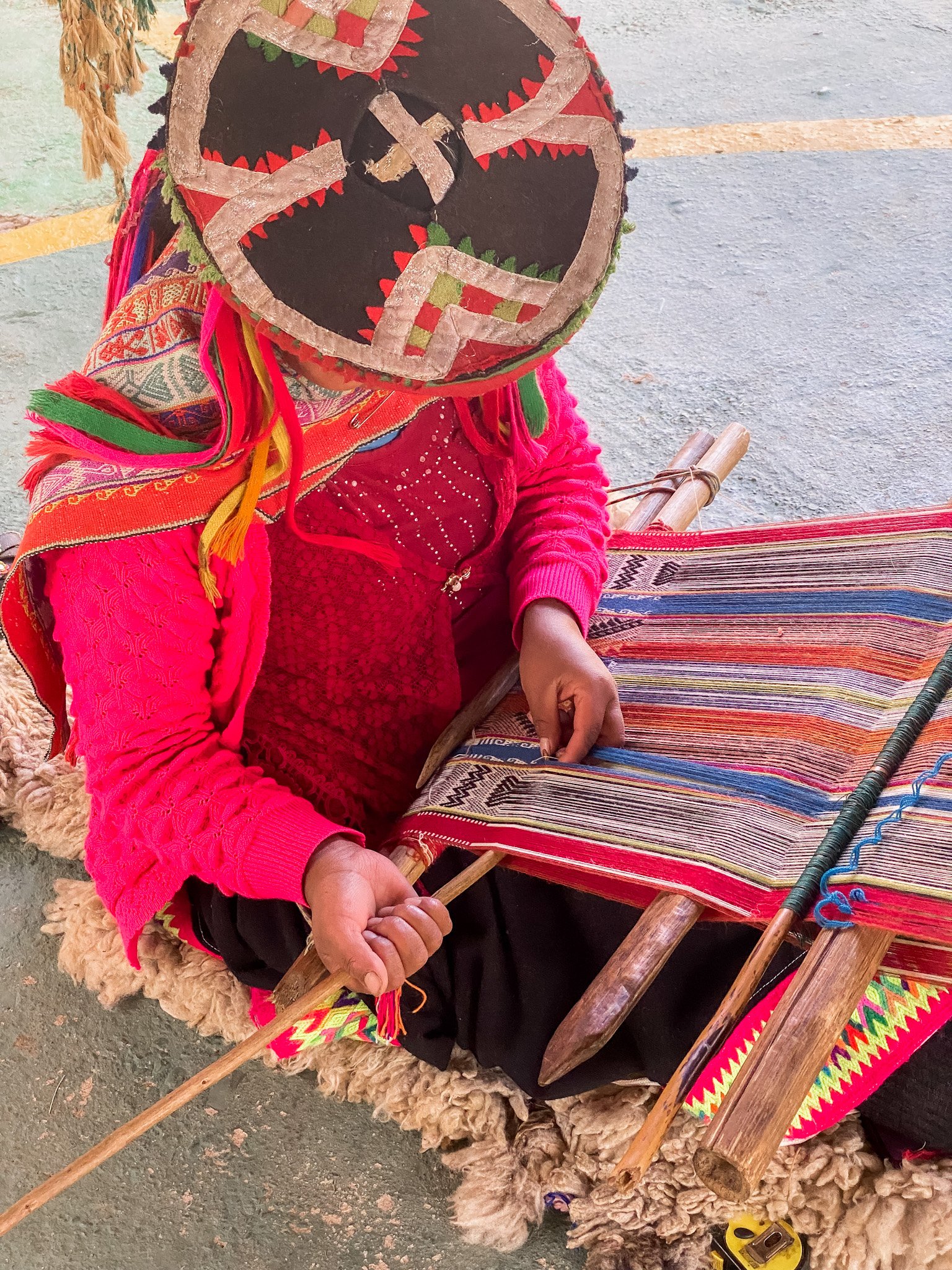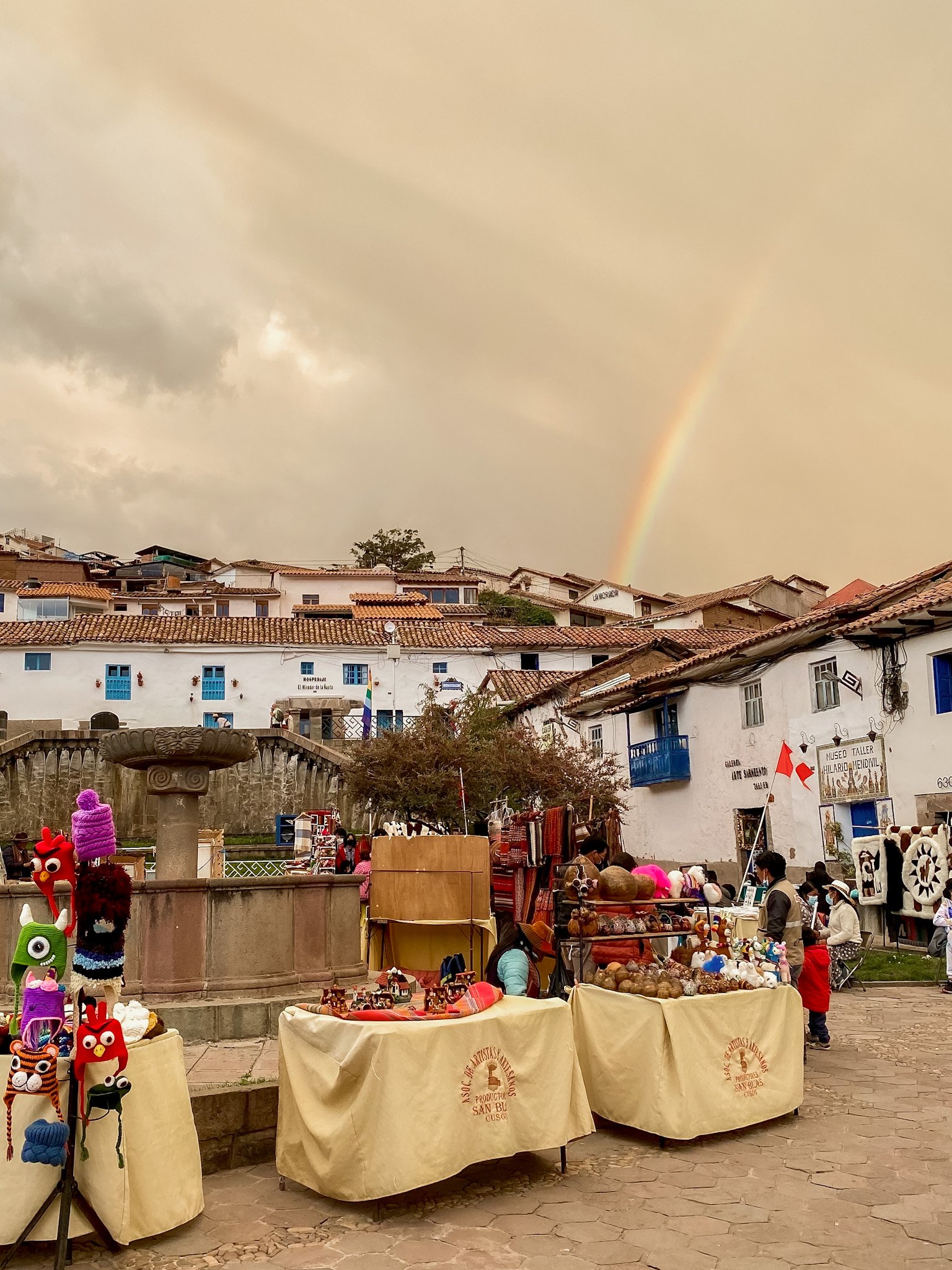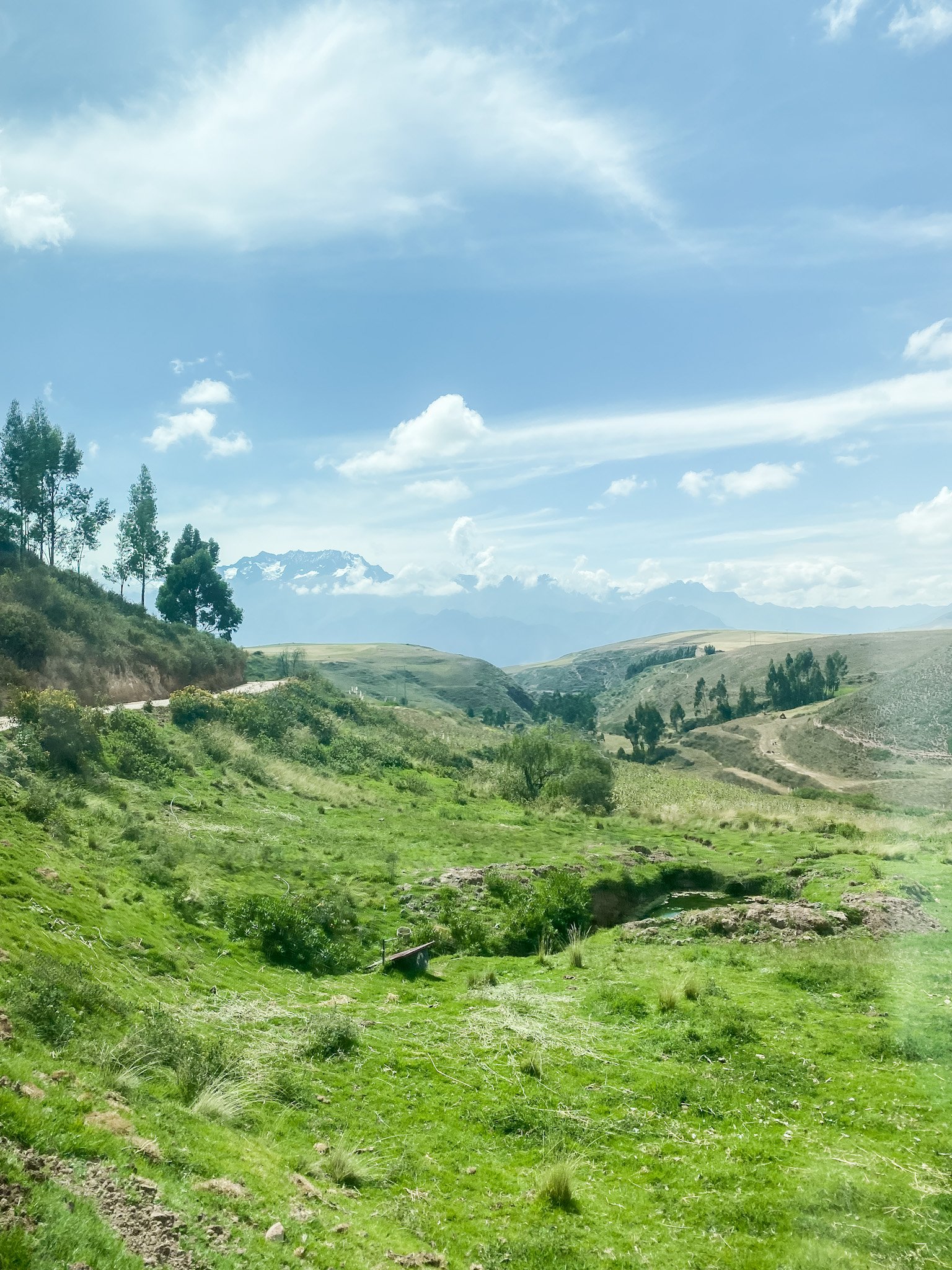Postcards from Cusco
A colorful collision of ancient history, beloved traditions, colonial modernism and ardent lore, Cusco is unlike any place I’ve ever visited. It’s as storied as deeply as many European cities but with narratives painted by the inimitable Incas, who were energized and informed by their trusted Sun god. It’s as naturally abundant, diverse and stunning as spots across Iceland, yet visibly kissed by the high mountain air. Sitting at 11,152 ft., Cusco is – by about 3,000 ft. – the highest altitude this sea-level chica has ever experienced (and I’m pleased to report that with proper planning and care, I was able to dodge altitude sickness!).
From my descent into Alejandro Velasco Astete International Airport, La Ciudad Puma seemed a brick-red sea set against vibrant, towering mountains. I was dumbfounded as I took in the Andes for the very first time. No window-seat video or photo would ever do it justice, so I took it all in analog style.
Over the course of a week, I would get the opportunity to explore Cusco’s (very) narrow alleys; taste its Andes-seasoned flavors (including Peru’s more than 3,800 types of potatoes – seriously!); speak to and learn from its warm people; and discover – if only at a glance – the Incas’ everlasting spirit, which remains palpable in the once-capital of their Empire.
Every day in Cusco felt like a celebration. On an ordinary Thursday, the sidewalks overflowed with street vendors, carts, pedestrians, flags, music – and, yes – even alpacas. When we asked our guide what the feast was all about, he casually replied, “This is just a normal day in Cusco. It’s a beautiful day to be alive!” Indeed, whether they’re honoring an ancient Incan tradition, commemorating the dressing of the Cruz Moqo (which powerfully overlooks the city from atop Sacsayhuaman), marking a Catholic holiday, or simply expressing their gratitude for another beautiful, sun-kissed day in their beloved city, Cusqueños – no matter how humble – unabashedly celebrate it all.
I was struck by this worthy and admirable pursuit of joy. Despite the sociopolitical odds they face, despite how visibly hard they work, despite how poor some may be considered, their riches – both in land and spirit – abound. They choose to celebrate both the beautiful and the not, the simple and the not-so-much.
The Incas believed the mountain was their mother, that they came from the belly of the earth (Pachamama). This is why when they died, they were left at the top of the mountain: to be close to their creator, to be nurtured everlastingly. Perhaps this is why Cusqueños today find such refuge and pride within their Sacred Valley, why every day spent nestled within it is worthy of celebrating… and as long as we’re cradled by Pachamama, shouldn’t we all?
Food for thought (and a lot of it) wasn’t the only thing I consumed during my visit. Below, a quick roundup of some Cusco standouts, as experienced by yours truly – along with a few of my personal postcards from my visit (all photos my own).
STAY.
Quinta San Blas. The boutique hotel (an Ananay property) provided a quiet and quaint haven from Cusco’s bustling San Blas District, with the convenience and accessibility of being right in the heart of it all – just a quick walk from Cusco’s shops, markets, restaurants and stunning plazas (squares). The hotel’s service was warm and friendly (true for everyone we encountered in Cusco, actually), and their tasty daily breakfast ensured we had plenty of fuel with which to start the day, including Té de Coca (a hot herbal infusion made using the dried leaves of the coca plant [yes, that one]), which is a go-to for fighting altitude sickness, fatigue and a myriad of ailments if you ask any Cusqueño.
EAT.
Pachapapa. Our first lunch in Cusco did not disappoint, thanks to this delicious spot serving up authentic Cusco flavors like Empanadas Salteñas, Ceviche de Trucha (trout ceviche) and Kancacho (panca chili-marinated lamb, slow-cooked in the restaurant’s clay oven and served with golden potatoes). We cooled down with the restaurant’s signature Limonada (lemongrass and coconut lemonade) and had our very first Peruvian coffee, which has forever altered my taste buds (ignorantly, I had no idea a simple Americano could taste this good!).
Local. Nestled within a steep and narrow street, you could blink and miss this gem of an eatery. The laidback, warm ambiance was the perfect pairing to a small and scrumptious menu, from which we picked (more) Ceviche and a plate of Papas Mixtas (again, Peru has more than 3,800 types of potatoes, and they really are all worth trying!), which we eagerly sampled along a trio of chilies (including Cusco’s beloved aji amarillo).
Mr. Cuy Grill & Wine. Somewhat of a “tourist trap,” I’m happy we fell for it, as it was the perfect happy hour spot after a day of nonstop city-walking. We shared a bottle of Intipalka Malbec (yes, I cheated on Argentina with a Peruvian blend, can you even imagine!?) and paired it with a handful of Maiz Tostado (corn nuts). I’m pleased to say it hit the spot, as we sat street-side and people-watched.
Organika. This farm-to-table restaurant sustainably sources its menu from its own farms across the Sacred Valley – and it shows! Never have I seen greener, riper avocados or lettuce leaves the size of my head, and don’t even get me started on the fruit! While our entire dinner didn’t miss a beat, my favorite has to have been the dessert: an arugula (yes, arugula) tiramisu. *chef’s kiss*
Incanto. An Italian restaurant in the Incan capital? Of course, this is South America after all, and the fusion simply works. The gnocchi just hits differently when it’s made with hearty Peruvian potatoes (don’t tell my dad), and the gin-and-tonic-dedicated bar was a gift that kept on giving. The sister restaurant to my favored Pachapapa, Incanto served everything up with exceptional service in a lively atmosphere marked by locals (which was lovely to see).
DO.
Mercado San Pedro. This is not just any city market, Cusco’s mecca of seasonings, produce, foods, handmade goods, you name it (!) is worthy of a dedicated visit. From booths selling Peruvian coffee and chocolate to butchers and farmstands and a bustling row of juice vendors, this is the place to shop for authentic souvenirs and sample some delicious snacks along the way, right next to the city’s locals. If you do nothing else, stop by one of the dozen Juguerias for a made-to-order pint of juice that’ll make you question whether you’ve ever even had a proper piece of fruit. I went with a papaya-mango-lucuma mix that had my tastebuds singing and left me satisfied for most of the day despite only drinking half of it.
Walk all of the plazas. Worth more than a walk-through, each of the colorful town squares has its own style, personality and offerings – and each one is celebrating something on any given day. We especially loved stumbling upon the Mercado Artesanal de San Blas in the Plaza San Blas on a Saturday afternoon; browsing the artisan stands along the Plaza de Armas as local performers danced and played music; and walking the Plaza San Francisco at night as the mountainside lit up with twinkling lights from homes high, high above.
Basilica Catedral de Cusco. The 16th-century place of worship, which took more than a century to build, has a deep and complicated history, but it remains an active place of worship and houses an impressive collection of colonial art. The church’s Gothic-Renaissance-style architecture provides a stunning backdrop for the Plaza de Armas on which it’s situated.
Shop from street vendors. I admit that I get really shy and awkward when it comes to bartering with street vendors, but Cusco’s people are so warm, they simply disarmed me. Not to mention, these artisans and small business owners work hard, visibly hard, to make ends meet and selling their handmade crafts – particularly after a two-year lull in tourism – impacts them greatly. Keep an eye out for items that are actually handmade (they’re pretty easy to spot), ask questions (they love being able to tell you about their crafts) and don’t be afraid to set your price. Shopping from street vendors is the best way to secure beautiful one-of-a-kind souvenirs at a reasonable price. If nothing else, you’ll walk away having learned something new from a lovely local to boot.
Go ahead, take a picture with an alpaca, lamb or llama! Yes, the colorfully clad ladies walking their alpacas, lambs and/or llamas are sincerely just there for the tourists, so be kind. The majority of these women make their descent into Cusco from their homes high up in the mountains in the early morning hours, walking with their animals in the pursuit of their day’s Soles, which they acquire through tips in exchange for a memorable photo. Before “falling for it,” I candidly asked our guide about the practice – are these animals cared for? Should I be engaging with them? The answer was not only a resounding yes but a reassuring, “These animals are both their pets and their livelihood. You can tell simply by looking at them whether they’re loved and cared for.” As evidenced by the adorable smirk on the two-month-old alpaca I giddily got to embrace, I can vouch for that too.
MORE TO EXPLORE.
As the former capital of the Incan Empire (and their so-called “Center of the World”), Cusco is the gateway to Machu Picchu, so consider it the home base to a variety of adventures to be had along the Sacred Valley, including:
Machu Picchu (duh). The Incan citadel (ca. 1450), situated more than 7,900 ft. in the Eastern Andes and nestled within the lush highland jungle (where the Andes meet the Amazon basin) is the most majestic sight I've ever laid eyes upon. And of course, you can read my musings on it here.
Sacsayhuaman. Constructed in the mid-15th century, this former Incan temple (later utilized as a fortress by the Spanish) is another testament to Incan ingenuity and to their inimitable architectural skills – the staggering stone structures not only blend harmoniously into the landscape, they’re geometrically stunning (you’ve got to keep in mind, they had no modern tools!). Today, Sacsayhuaman (meaning “Royal Eagle”) is still used for Incan-inspired ceremonies and reenactments and makes for a beautiful daytime visit – from the top, you’ll get panoramic views of Cusco and are sure to spot several of the llamas and alpacas that live on site.
Ollantaytambo. My only regret is not having been able to spend more than just a few hours in this tiny but mighty town. Located about an hour south of Cusco within Urubamba, Ollantaytambo was built as a strategic military, religious and agricultural center. Today, it’s another visually stirring reminder of the Incas’ architecture and engineering prowess and worthy of a visit, if only for a few hours. We had the opportunity to experience an authentic Pachamanca lunch at El Albergue’s on-site farm. Native Quechua for “earth oven,” Pachamanca refers to the technique of cooking food underground with hot stones. The result? A family-style menu of salad, potatoes, fava beans, garlic-and-chincho-marinated chicken, pork and lamb, vegetable souffle and a jungle-chocolate brownie – all served al fresco and with plentiful Chicha Morada (made from purple corn, fruit and spices) and freshly made cocktails from the on-site Destileria Andina flowing throughout. You betcha a couple of bottles of Matacuy (the Andes’s proclaimed post-dinner elixir) made it home with me. After lunch, at the Ollantaytambo train station, we caught the train to Aguas Calientes, where our Machu Picchu adventure would later begin.
***
Some final words… I was so fortunate to take this trip with a dear girlfriend and her family, who generously took care of the logistics with a dedicated travel planner. This is a destination where visitors certainly benefit from a guide, if that’s a possibility for you. While simply “winging it” is feasible, having a guide will ensure you explore safely and efficiently, get access to several lesser-known spots and hear some incredible back stories along the way. Not to mention, having someone to navigate the region’s streets and traffic is an absolute godsend and allows you to spend more time taking in the sights. It is apparent that Cusco, much like many other destinations, is still recovering from the pandemic and finding its footing from an infrastructural standpoint. That said, however you choose to visit, please keep the travel golden rules in mind: Be an observer, not an intruder. Be respectful of local culture. Be courteous and kind. Be alert. Be patient. Leave no trace.
Have you visited Cusco? I would love to hear your take, too – and if you haven’t, perhaps you’ll consider a trip soon. I promise you won’t regret it!



